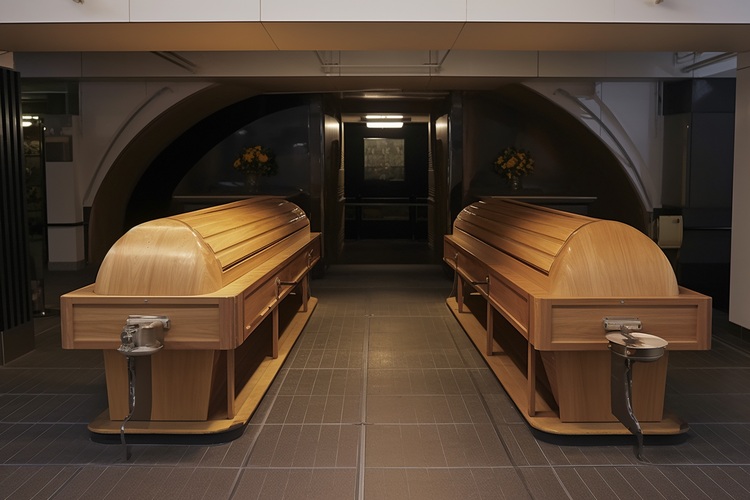What Really Happens During Cremation in the UK?
Did you know cremation in the UK offers flexible, cost-effective choices while respecting important traditions? Discover the practical steps, legal needs, and eco-friendly options that can help you make informed and thoughtful decisions during a difficult time.

Understanding Cremation and Reasons Behind Its Choice
Cremation is the process of reducing a deceased body to ashes by exposure to intense heat inside a specialized furnace known as a cremation chamber or retort. Crematoriums across the UK perform this method as an alternative to burial.
Some common reasons families choose cremation include:
- Flexibility: Ashes can be kept, scattered in meaningful places, or buried.
- Cost: Usually less costly than burial as it avoids purchasing and maintaining a grave.
- Simplicity: The procedure can be carried out without elaborate funeral ceremonies if preferred.
- Respect for customs: Crematoriums can accommodate a variety of cultural and religious traditions.
As of 2025, cremation continues to be a widely accepted option, facilitated by crematoriums regulated under UK legislation.
Overview of the Cremation Procedure
The cremation process is strictly regulated for legal compliance and health standards. Below is a step-by-step outline:
- Preparation and Legal Requirements
Certain legal steps must be fulfilled before cremation can proceed:
- Obtaining a medical certificate confirming the cause of death.
- Securing a cremation certificate issued by a qualified medical professional.
- Collaborating with a funeral director to manage arrangements and obtain necessary permissions.
- Preparing the deceased with respectful placement inside a coffin. Options include traditional or biodegradable types, based on preference.
- Transport to the Crematorium
The coffin is transported from the funeral home or place of death to the crematorium. Facilities such as Basildon and District Crematorium or Dunmow Crematorium in Essex offer environments designed to respect cultural and religious traditions.
- Placement in the Cremation Chamber
At the crematorium, the coffin is placed into the cremation chamber and sealed to begin the cremation.
- Application of Heat
The body is exposed to high temperatures, generally between 870°C and 980°C (1600°F to 1800°F):
- This process reduces the body to bone fragments and ashes.
- The cremation usually lasts from 1.5 to 3 hours, depending on the equipment and the size of the individual.
- Cooling and Processing
After cremation, the bone fragments cool within the chamber. Subsequently:
- Any metal items such as surgical pins or prosthetics are removed.
- Remaining bone fragments are processed into a fine ash-like substance, commonly called “cremated remains” or ashes.
- Ash Collection and Care
Ashes are gathered and placed into an urn or container selected by the family. These can be kept by relatives, buried, or scattered, in accordance with legal permissions.
How Cremation Services Are Provided in the UK
There are two primary types of cremation services:
- Traditional Cremation: Usually includes a funeral service with mourners present before or during the cremation. Services can be religious or secular, including readings and music based on family preferences.
- Direct Cremation: A simpler option with no prior funeral or gathering; chosen for ease and lower cost. Memorial services may be held separately if families wish.
Environmental Factors and Innovations in Cremation
Environmental concerns impact funeral choices for some families in 2025. While conventional flame cremation releases carbon and other emissions, alternative options exist in the UK:
- Water Cremation (Resomation): Employs water and alkaline chemicals at lower temperatures to decompose the body, producing minimal ash and fewer emissions. This technique is becoming available through select providers but remains less common.
- Biodegradable Coffins: Made from materials such as cardboard or wicker, these options aim to lessen environmental impact.
- Natural Memorial Options: Scattering ashes in approved natural areas or using biodegradable urns that support plant growth are eco-friendly choices.
Handling of Ashes After Cremation
Families may select from various options for cremated remains:
- Home Preservation: Retaining ashes in decorative urns.
- Scattering: Ashes may be scattered on private property with the landowner’s permission or in approved locations, noting some public areas require council authorization.
- Interment: Placing ashes in a burial plot or columbarium niche.
- Memorialization: Incorporating ashes into items such as jewelry or planting with trees.
Cost Factors and Accessibility
Cremation generally costs less than burial due to the absence of expenses such as land purchase or grave upkeep.
- Direct cremations tend to be the most affordable choice.
- Most UK crematoriums accommodate a range of cultural and religious needs.
- Funeral directors can assist families in understanding available services and associated costs as of 2025.
Practical Information and Recommendations
Cremation is a legally regulated and respectful method offering multiple options to commemorate loved ones. For those considering cremation, it can be useful to:
- Consult a reputable funeral director early to understand legal requirements and service options.
- Decide between a traditional ceremony or direct cremation.
- Consider environmental preferences such as coffin type or alternative methods.
- Plan for ash handling, particularly when considering scattering in public spaces.
- Review costs upfront to avoid unexpected expenses during a difficult time.
Though detailed visual documentaries of the cremation furnace process are not commonly publicly accessible, funeral directors and crematorium staff can provide explanations and support to families. Informational resources help those wishing to develop a compassionate understanding of the cremation procedure.
Sources
- What Are The Different Methods of Burial Available in the UK? – Ergsy
- Co-op Funeral Directors News & Information – Chelmsford Star
Disclaimer: All content, including text, graphics, images and information, contained on or available through this web site is for general information purposes only. The information and materials contained in these pages and the terms, conditions and descriptions that appear, are subject to change without notice.




